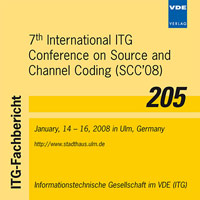Interaction between scheduling and user locations in an OSTBC coded downlink system
Konferenz: SCC'08 - 7th International ITG Conference on Source and Channel Coding
14.01.2008 - 16.01.2008 in Ulm, Germany
Tagungsband: SCC'08
Seiten: 6Sprache: EnglischTyp: PDF
Persönliche VDE-Mitglieder erhalten auf diesen Artikel 10% Rabatt
Autoren:
Sezgin, A.; Charafeddine, M. (Stanford University, Information Systems Laboratory, 350 Serra Mall, CA 94305-9510, USA)
Jorswieck, E. A. (Signal Processing/Communication Theory, Royal Institute of Technology, KTH, SE-100 44 Stockholm, Sweden)
Inhalt:
We study the MIMO broadcast channel (BC) with perfect channel state information (CSI) at the mobiles and different types of CSI at the base station, i.e. without CSI, with long-term CSI and with CQI. The antennas at the base station are used to apply an orthogonal space-time block code (OSTBC). At the receiver a linear MMSE detector is employed. We first study the optimal transmit and scheduling strategies for these three cases using the weighted sum minimum mean-square error (WSMSE) as the performance criterion. Afterwards, we analyze the impact of the user locations on the achievable minimum WSMSE. Depending on the scheduling strategy (minimum or maximum fairness), having the users rather more spread out within the cell is either helpful or harmful in order to minimize the WSMSE.


